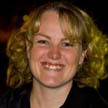I’m a Scientist is like school science lessons meet the X Factor! School students choose which scientist gets a prize of $1000 to communicate their work.
Scientists and students talk on this website. They both break down barriers, have fun and learn. But only the students get to vote.
This zone is the Disease Zone. It has scientists studying the causes and processes of illness . Who gets the prize? YOU decide!









Some time around 3.9 to 3.5 billion years ago, the first molecule that could replicate itself came into existence, and that was the beginning of life. We don’t know yet exactly what the molecule looked like or how it arose; these are really hard questions to answer, and we won’t have a better idea until we can reliably reproduce the beginning of life in the lab. Even then, it’s possible that we’ll only know one way that life might have started, not the specific one that actually occurred; we’ll need to spend a long time collecting evidence to sort out how likely the possibilities are.
I know a few of the potential ways that this could have happened, but they’re pretty complicated and it would take me a long time to go into them here. What I can tell you, though, is that when life began, it began under conditions that you wouldn’t recognize today. 3.5 billion years ago the Earth was a much different place. The ground was just starting to firm up (the earth had been largely molten lava before that), the atmosphere had little or no breathable oxygen in it (if it was present, it was probably trapped as water vapour or bonded to iron) and may have had many things in it that would be toxic to breathe, etc. There were probably oceans, but conditions would have been wild.
In these conditions, somehow the first replicator (molecule that could replicate itself) showed up. It probably began as a chance event when the right building blocks (amino acids) came together in the right way. The basis for this is buried in biochemistry that I don’t fully understand, but there’s a lot of plausible ways for this to happen. You’ll also hear about the possibility that these amino acids may have come from outer space on comets that hit the earth early in its formation; this is possible, because there’s reason to believe that these building blocks can form out in space. This is an exciting idea if true, because it’s another reason to believe that life would be common throughout the universe.
I hope that helps a little bit; this is a really deep topic and there’s a lot to read about it, but it’s definitely an exciting question!
4
Dear Sarahb; I am a biochemist. While I teach biochemistry on how life works, there is a bit about how life started. To make the long story short, the biochemistry text book mention about Dr. Stanley Miller who simulated ‘the ancient(primordial) atmosphere’ . He did make some amino acids and nucleotides from ammonia, CO2, H2O under electric power instead of thunder and lightening. What he showed was chemical reactions and it is not any evidence of how life started. Nowadays deep sea theral crater is suggested as the site of ‘beginning of life’.The begining of life can only be suggested, so called hypothesis.
The basic unit of life is ‘Cell’ . The simplest cell like bacteria is composed of cell membrane, genetic information(DNA mostly), ribosome and cytoplasm; made of protein, lipid, carbohydrate, nucleic acid(DNA and RNA), vitamin, minerals, etc. Collection of amnio acids doesn’t make protein by itself, nucleotides doesn’t make itself into DNA or RNA. And where did the ammonia, H2O and CO2, lightening, etc come from? ‘Big Bang’ from a small dot? Where did the small ‘dot’ come from? Everything assumes preexisting something!
The 2nd Law of Physics/Thermodynamics states that entropy(randomness) increases”. Bunch of amino acid can’t go into ordered protein by random collision no matter how much time is given. Same as nucleotides can’t be ordered into DNA or RNA. In opposite, as time passing, the proteins and nucleic acids decomposes into its molecules and atoms, according to 2nd law of physics.
When you see an artifical silk flower, you know that somebody has made it, even though you do not know the name of the maker. I think same is true for the real flower with fragrance. We only know that any human being can’t make real flower, though.
About 2 weeks ago, my mother passed away and I was at her death bed. Before and after her last breath, she was physiically same. Minute ago she was breathing and alive, minute later she was without breath and was dead. If she could decide herself life or death, she would have chosen to live with us. It was not her decision. That is why we, Koreans, say ‘Life’ is to live by order(higher authority). I am saying that life and death are not of our choice, nor random happening, neither by an accidenet, etc.
To be honest with you as a scientist, I think ‘Start of Life’ whether indidual or at the very beginning, can be explained only as creation by Creator.
Thank you for asking this important question.
0
Well, if you really want to know, I believe God created the world, all the animals and us! When that happened, I don’t know. How long the process of creation took, I don’t know. I do believe in evolution and can see that humans, animals and plants adapt to their environment, but I don’t believe it all started with a big bang.
The human body is sooooo complex and the processes in a single cell are so complex, I cannot believe it all started with a few molecules bumping into each other.
0
After much reading and thinking, (because I’ve never really considered this question) I think I agree with the current hypothesis that Steven was discussing. I did find a cool article (https://www.abc.net.au/science/articles/2009/09/17/2689221.htm) about when life possibly began as well.
I think that there is still a long way to go until its figured out….if it ever is! Scientists will probably be able to replicate the different theories in a lab to figure out which makes the most sense – but we may never know for sure 🙂
0
I strongly agree with what Steven has said in his answer and comment, that life probably began around 3.5 billion years ago, when the first replicating molecules were formed from a combination of primordial soup containing various building blocks (such as amino acids, long-chain carbon molecules, etc.) and some form of catalyst, like a large charge lightning strike. I’m using the generally accepted definition of ‘Life’ as a self-sustained and replicating chemical system capable of undergoing evolution.
Scientists are still trying to work out how this all happened, and there is some pretty complex biochemistry involved, a lot of which I don’t understand. Scientists who work on this problem have a number of experiments that they can perform, replicating what we thing conditions were probably like 3.5 billion years ago, with similar molecules, and seeing if they can create replicating molecules like RNA or DNA. These was actually a competition run last year, called the “Origin of Life Challenge”, where groups could put forward their proposal of how life started, and how they would test their hypothesis. The proposals had to answer some very specific questions, which you can read all about here: https://old.richarddawkins.net/articles/643549-origin-of-life-challenge-how-did-life-begin
As you can see, the questions get to the very heart of the question you asked, but in even more detail!
You can read about the teams that won, and how they plan to use science to investigate the questions here: https://www.originlife.org/
0